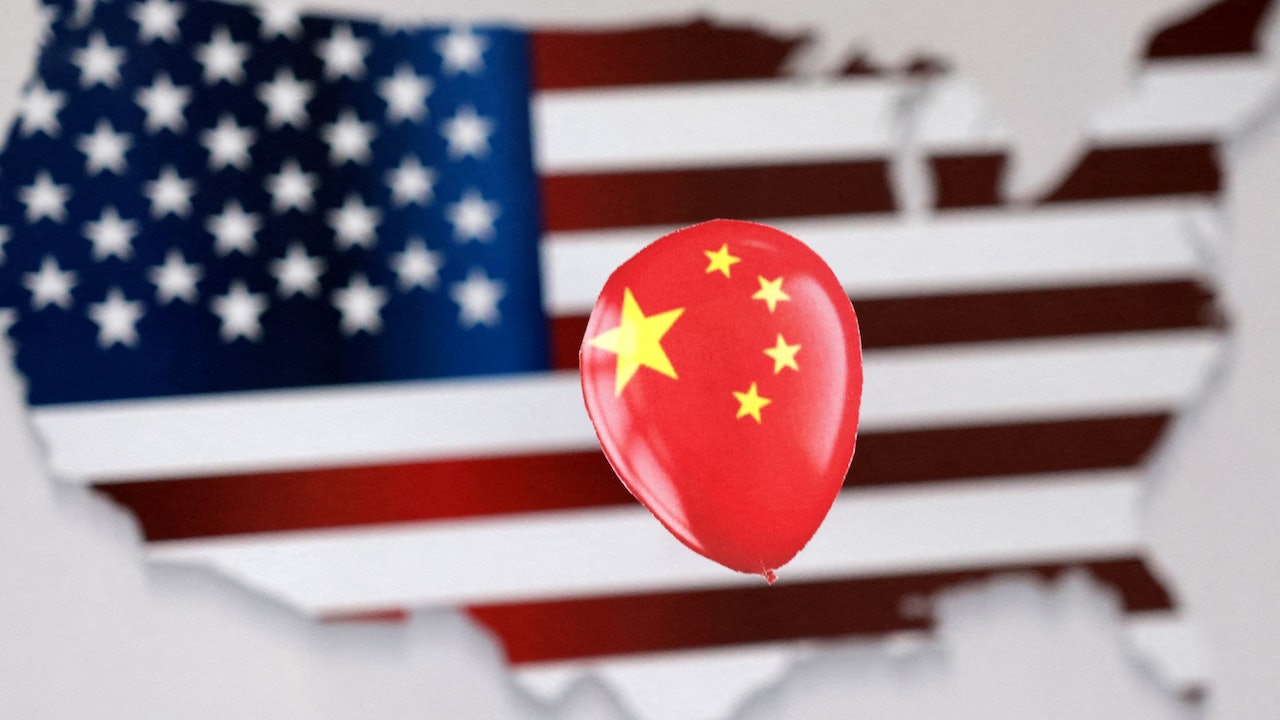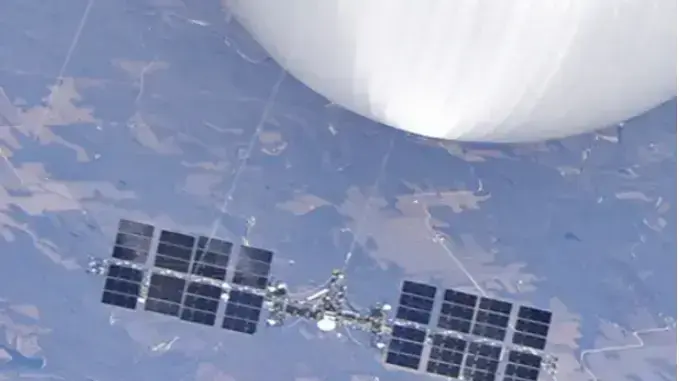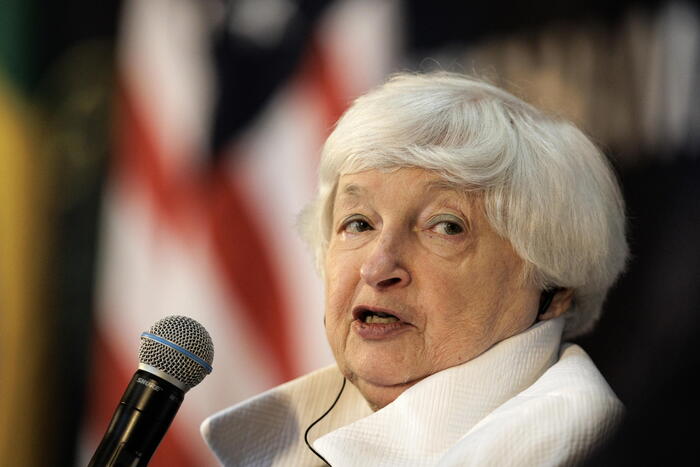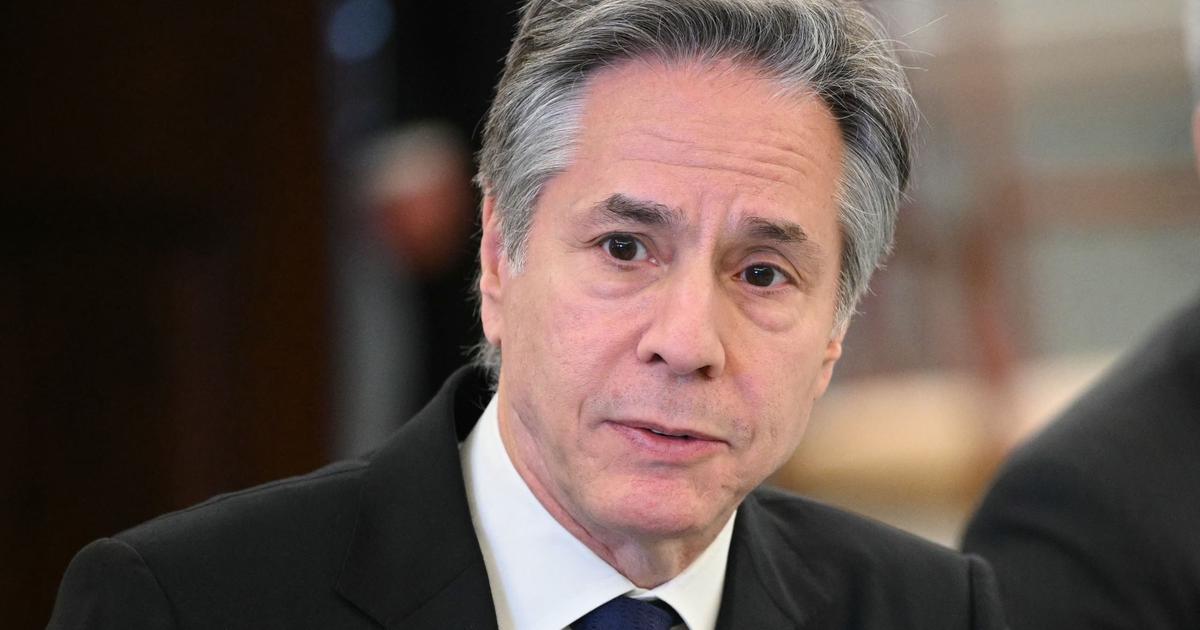On February 2, U.S. Department of Defense spokesman Patrick Ryder said that the U.S. government detected high-altitude balloons appearing over the U.S. mainland and suspected they were "spy balloons" from China; China responded on February 3, The so-called "spy balloon" is an unmanned airship from China. It is of a civilian nature and is used in scientific research fields such as meteorology. The reason why it strayed into the U.S. airspace was due to the influence of the westerly wind and its limited control ability, so it seriously deviated from the planned route. .
However, judging from the follow-up development, China's explanation clearly failed to prevent the situation from deteriorating.
On February 3, the United States decided to postpone Secretary of State Antony Blinken's visit to China, and the US Department of Defense even reported that a second Chinese balloon had been found in the airspace of Latin America; on February 4, although the US Department of Defense stated that the balloon did not cause any The U.S. military still shot down any "substantial safety hazard" on the same day; on February 6, some of the balloon wreckage was sent to the FBI laboratory for analysis. Although China hopes that the U.S. side will return the wreckage, the U.S. side is noncommittal.
On February 6, US Deputy Secretary of State Sherman (Wendy Sherman) introduced China's "Balloon Surveillance Program" to 150 diplomats from about 40 embassies; Republican committee chairman Mike Rogers called the balloon incident a "deliberate show of force by Beijing"; on February 8, Blinken said that "the United States is not the only target of the plan", China has balloons on five continents, violating the sovereignty of countries on five continents. The United States has shared the intelligence collected from balloons with dozens of countries; on February 9, the U.S. House of Representatives passed the The resolution "condemns China for sending reconnaissance balloons" and "shamelessly violated the sovereignty of the United States." The House of Representatives also requires the Biden (Joe Biden) administration to report to Congress all known incidents of "China's violation of US airspace" in recent years.
In essence, the "wandering balloon" is an accidental event, but it is really unexpected that it can cause such waves.
After the United States shot down the Chinese balloon on February 5, the authorities sent personnel to the sea off South Carolina to salvage the remains of the balloon.
(Reuters)
A hilarious American farce
In all fairness, it is indeed inappropriate for a civil aircraft to stray into the airspace of another country, but in the norms of international law, the upper limit of territorial sovereignty is not clearly defined.
According to US media reports, when the balloon was discovered, it was flying at an altitude of 18,000 meters. However, in different applicable practices of various countries, the airspace range can be as low as 13,700 meters, which is about the highest that most aircraft and balloons can operate. The altitude can also be as high as 160,000 meters, which is about the altitude of the lowest short-term stable orbits of satellites.
Other reference standards include the Karman line (Karman line) at an altitude of 100,000 meters, which is the boundary between outer space and the earth's atmosphere regulated by the International Aeronautical Federation, and the altitude of 80,000 meters defined by the US Air Force and NASA. It is the boundary between the atmosphere and space.
However, the international community has not been able to form a unified standard for the height of the airspace. Therefore, whether it is the Karman line or the NASA standard, its nature is at best a "working benchmark" and does not have a legal status at the level of globally recognized sovereignty.
For this reason, with regard to incidents of civilian or even military aircraft straying into the airspace of other countries, international practice often adopts the principle of diplomatic notes and negotiation priority. Military shooting down is often the last option when the situation is urgent and communication is ineffective. depends on the threat.
Take the 2001 China-U.S. aircraft collision incident in the South China Sea as an example. It is an international practice that all aircraft are destroyed if they enter the airspace. The US EP-3 has no chance to make an emergency landing on Chinese territory.
Looking at the "stray balloon" incident, it is clear that the United States is not facing an emergency situation such as a military plane forced to land.
First of all, although the balloon was exaggerated for military use by the U.S., and an unnamed official said through the media that it "has electronic surveillance technology capable of monitoring U.S. communications," but looking back at the Pentagon's official statement, it always stated that "the balloon does not give China high-level Second, according to US media reports, this is the fifth time since 2017 that Chinese balloons have flown into the US airspace. There were three times during the Trump (Donald Trump) period and Biden The government has done this once before, but due to "various factors" such as too short a time, relevant information has not been published in the newspapers.
In short, according to the U.S. side, scientific research balloons cannot exert stronger surveillance capabilities than satellites. It is not the first time that the U.S. side has challenged "stray balloons", but still chooses to shoot down such a fierce response. The reason is still political considerations greater than national security demands.
China-U.S. balloon turmoil: U.S. Air Force F-22 fighter jets took off and set off on February 4 to shoot down Chinese balloons flying into U.S. airspace.
(U.S. Department of Defense)
From the dimension of interaction with China, the United States has always been divided into doves and hawks, both in the executive branch and within the military.
Among them, the doves do not mean being friendly to China, but they advocate that Sino-US competition must have risk management and control, and believe that no matter how fierce the struggle is, the rise of the conflict must be controlled through diplomatic dialogue and other means; the hawks do not mean to immediately start a war against China , but relatively do not pay attention to the risk of "wiping guns and misfires", and subconsciously believe that Washington's every inch of advancement will be able to get Beijing to retreat again and again.
In short, the doves pay more attention to the existence of the "guardrail" and believe that the "guardrail" will help prolong the Sino-US struggle and buy more time and possibilities for the United States; the hawks believe that "fighting without breaking" in Sino-US relations is the norm , the United States is responsible for "fighting", and China is often responsible for "not breaking".
Taking the topic of "Wu Tong" as an example, the attitudes of the hawks and the doves are different.
The hawks do not shy away from speculating on military reunification. For example, US Admiral Phil Davidson and Chief of Naval Operations Mike Gilday publicly released predictions that the People's Liberation Army will soon attack Taiwan without evidence or signs. The latter directly and boldly declared 2023; the doves relatively avoided talking about war lightly. For example, Bonnie Glaser, director of the Asia Program of the Washington think tank "German Marshall Fund", once publicly stated that , "The People's Liberation Army will attack Taiwan in 2027" has some supporters in the Pentagon and the intelligence community, but this seems to be based on an assessment of when China will be able to attack Taiwan, rather than an analysis of Beijing's intention to use force. "We cannot rule out any possibility. , but the statement of 2022 and 2023 is pure speculation, which I think is irresponsible.”
The balloon incident also showed the two factions' tricks.
Blinken's planned visit to China should have been urged by doves, but the hype about Chinese balloons is clearly the work of hawks. After mobilizing panicked public opinion through the media, the latter indirectly opened a new battlefield: the 2024 outpost between the Democratic Party and the Republican Party .
Judging from the results, the China doves were seriously injured, and the hawks were showing off their power; the Republicans seized the opportunity in the battlefield of "defending the United States." Although the Democrats were once beaten, they still took back part of the public opinion by shooting down balloons. lost ground.
But the above gains are not without costs and costs. From the perspective of global public opinion, the United States not only sent a group of ridicules to Chinese netizens, but also staged a farce in front of the whole world.
However, related developments have caused China to maintain a posture of restraint and not dance with the United States. Even if it escalates its response, it will always maintain the situation under control.
U.S.-China balloon squabble: U.S. military commander monitors search for Chinese balloon missions (DoD)
Why China is calm
First of all, the balloon incident did mobilize some of the "China threat theory" in the global market, but the effect was obviously not as good as expected.
Judging from the fact that Sherman invited 150 diplomats from 40 embassies to introduce China’s “Balloon Surveillance Project” on February 6, the United States should hope to create an atmosphere of public opinion that “China’s balloons monitor the world” in order to consolidate the confrontation of freedom and democracy The evil totalitarian Cold War narrative, while maintaining the US unipolar dominance of public opinion, may even further list China and announce sanctions on some companies.
Judging by the results, however, the political responses across countries have been rather sparse.
Although Japan stated that a Chinese balloon had floated into its airspace before and that it would cooperate with its allies to deal with the balloon issue, its statement did not stop there and did not follow up and escalate into a direct condemnation of China.
As for other countries, although they may not necessarily refute the United States, they obviously hope to have a low-key space. For example, although the Australian foreign minister stated that "we share the United States, we are concerned about violations of US sovereignty and international law. In terms of how to change this situation, the United States has a plan." A prudent way, a responsible way, and ensured that it was shot down safely over their territorial waters," but also emphasized that the China-Australia Trade Senior Officials Meeting will not be affected.
As for the Latin American countries that the U.S. claims to be "surveilled by balloons," they don't give the U.S. face even more.
The Colombian Air Force stated on February 4 that it had discovered an object "similar to the characteristics of a balloon" on February 3. After determining that it would not pose a threat to national security, national defense or aviation security, the Air Force continued to track it through the air defense system. whereabouts until it left Colombian airspace.
The Ministry of Foreign Affairs of Costa Rica also issued a statement on the 6th, saying that the Chinese government admitted that a balloon flew over Costa Rica, and the Chinese embassy in Costa Rica "has apologized for this incident." , and its own control and debugging ability is limited, so it strayed into the airspace of Colombia.
To sum up, the two countries are obviously unwilling to dance with the United States. Colombia did not mention China at all, while Costa Rica shared the same caliber with China. machine".
After the U.S. military sent warplanes to shoot down a Chinese balloon on February 4, Reuters photographers captured what appeared to be the balloon's aftermath in Holden Beach, North Carolina.
(Reuters)
As for why this matter cannot summon a global anti-China wave, it has something to do with the fact that the United States has violated international conventions.
This is not the first time a Chinese balloon has strayed into U.S. airspace, nor will it be the first time a "stray balloon" has entered the world, nor will it be the last.
If all countries follow the hysteria of the United States and even clap their hands, when it is their turn to stage "stray balloons", should they also encourage the countries involved to directly abandon diplomatic communication and upgrade them all to military shooting down?
The United States may be able to obtain "exemption" based on the strength of a major country, but for other medium-sized countries, this is tantamount to destroying the tacit understanding and returning to the jungle state of the jungle. It will not only increase the cost of related scientific research and private enterprises, but also cause conflicts between countries. Pointless conflict.
Therefore, although most countries will not directly refute the United States, they will not be in a cocoon.
In addition, the balloon incident not only failed in terms of global mobilization, but even the internal fermentation in the United States began to backfire on the hype side.
For example, although the Republican Party gained some public opinion support by criticizing Biden and showing a tough stance towards China, it began to face new public opinion doubts: If Biden is incompetent, then there have been three Chinese "stray balloons" during the Trump period "Aren't they more incompetent than the Democratic Party?
Perhaps because of this, Trump, who intends to run for president in 2024, said on February 5 that he had never heard a briefing on such incidents during his tenure. "If it happened, I would shoot it down immediately," and accused Biden of The government spreads fake news.
Biden’s national security adviser, Jacob Sullivan, tried to justify himself, saying that after taking office, Biden ordered improved airspace surveillance, allowing the US military to detect previous intrusions, “enhancing our ability to detect things that the Trump administration cannot detect. ".
In all fairness, such a statement is similar to Biden's statement that "shooting down the balloon will not affect Sino-US relations."
The development of the situation has been quite obvious so far. It is the United States that is powerless in global mobilization. It is also the United States that is forced to fall into the quagmire of lies at home. Although China has paid some public opinion costs in the process, it is relatively easy to do compared with the United States. Therefore, its response To a large extent, it is a "rolling adjustment" as the situation develops.
Japan once discovered flying objects similar to Chinese reconnaissance balloons flying to the continental United States on June 17, 2020, and over Miyagi Prefecture on September 3, 2021.
Pictured is one of them.
(@BalloonSciDan Twitter)
On February 3, China issued a statement explaining the nature of balloons for scientific research and civilian use and the causes of "wandering". Wang Yi, a member of the Political Bureau of the CPC Central Committee and director of the Office of the Central Foreign Affairs Commission, even spoke with Blinken, emphasizing timely communication and avoiding misjudgment , control differences; after the United States shot down the balloon on February 4, Beijing raised the level of response. Chinese Vice Foreign Minister Xie Feng lodged stern representations with the head of the U.S. embassy in China regarding the U.S. shooting down of the balloon. impact and damage the improvement of bilateral relations", while the Chinese government is closely monitoring the development of the situation and reserves the "right to make further necessary reactions".
But since then, as the global mobilization of the United States has failed, Beijing has not made a more assertive stance.
Returning to the essence of the incident, the "wandering balloon" is a farce of the Sino-US game and the US political dispute. The US doves against China have been seriously injured by this, and the China hawks are eager to see China's "reciprocal revenge" so that other Temporarily get rid of the backlash of lies, continue to hype the China threat theory, and draw political capital from it.
From the long-term perspective of the Sino-US game, China is always willing to create a living space for the doves and avoid encouraging the hawks. After all, it is always better for the doves and hawks to contain each other than for the hawks to be one-sided. An important idea of beauty interaction.
From a short-term perspective, the "stray balloon" farce should be an accidental event, and Blinken may still have the opportunity to visit China after the incident.
However, from a long-term perspective, this incident reflects that Sino-US relations have entered a new fragile trough. The mutual trust between the two sides is extremely unstable. How to grasp the scale of interaction with the US and deal with the ebb and flow of hawks and doves towards China will continue to test Beijing in the future.
Why does the United States hope to mobilize the world to oppose China on the balloon incident, but the results are not obvious?
Countries do not want to break the practice and increase the cost of communication and response to similar incidents in the future.
Why did China calmly respond to the provocation of the United States in the balloon incident?
The United States' global mobilization has not been effective, and it has drawn new disputes in internal affairs, and China still needs to create political space for doves.
The United States refers to the Chinese balloon as part of the fleet. Beijing: Or is it part of the U.S. news and public opinion war against China? Balloons of unknown origin have appeared over Taiwan’s presidential palace?
The director of Taiwan Meteorological Bureau quoted Western media to pay attention to Biden: China's "balloon incident" has no major security loopholes Chinese balloons|The United States is anti-China hysterical It is customary to reject the call between the Chinese and US defense ministers. Japan: Unidentified balloons were discovered on the high seas west of Kyushu in early 2022. The U.S. State Department accused Chinese balloons and the military of discussing "taking action" against relevant entities







/cloudfront-eu-central-1.images.arcpublishing.com/prisa/CIWYA32EL2HWMI7DWEZGSK5F2U.jpg)







